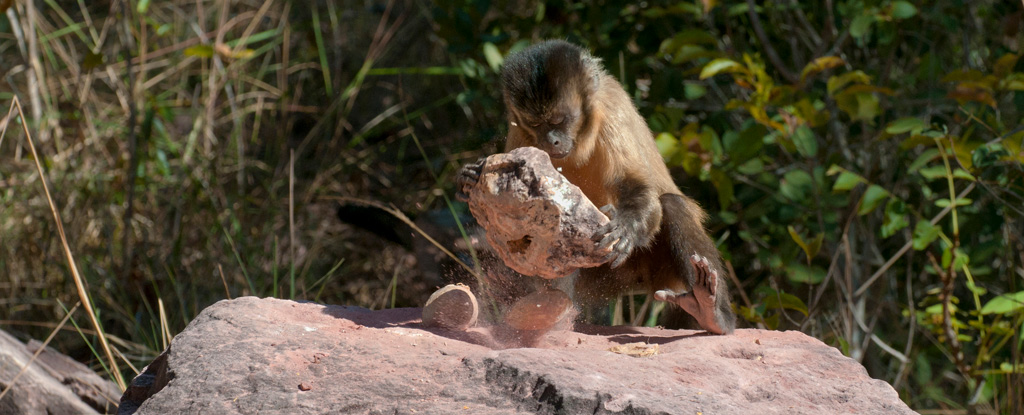Researchers believe ancient stone tools discovered in Brazil are the work of capuchin monkeys, not early humans, the Art and Design website Artnet reports, citing a scholarly article.
“We are confident that the early archaeological sites from Brazil may not be human but belong to capuchin monkeys,” wrote archaeologist Agustín M. Agnolín and paleontologist Federico L. Agnolín in an article published in the peer-reviewed science journal The Holocene in November.
the article said that during previous excavations at Pedra Furada – a collection of over 800 archaeological sites in Piauí, northeastern Brazil – archaeologists uncovered what were believed to be ancient stone tools made from locally occurring quartz and quartzite boulders.
The oldest of the stone tools discovered appear to be as old as 50,000 years, according to the article, leading some scientists to theorize that they provided evidence of early human habitation in the region.
Unexpected insights from 2016, however, posed a challenge to this theory.
Results showed that capuchin monkeys in northeastern Brazil are capable of making and using a variety of stone tools.
This gave the opportunity as it was at first proposed in 2017 that apes – not humans – could be responsible for the discoveries of Pedra Furada.
And according to Agnolín and Agnolín, the researchers behind it The Holocene article, there is now a compelling body of evidence that the tools were not man-made.
“Our review of the evidence suggests that the ancient sites in Brazil do not actually belong to the first Americans but are actually the product of ape activity,” Federico L. Agnolín said Argentina’s National Scientific and Technical Research Council (CONICET).
The researchers compared the tools found at Pedra Furada to those that capuchin monkeys make today.
frameborder=”0″ allow=”accelerometer; autoplay; write clipboard; encrypted media; gyroscope; picture in picture; web-share” allowfullscreen>
“The result was surprising: there was no difference between the supposed human tools of 50,000 years ago and those made by apes today,” Agustín M. Agnolín told CONICET.
The researchers drew on previous research and observations of capuchin monkey populations showing that the primates use small rocks as hammers and large, flatter rocks as anvils to break open nuts and seed pods.
“The result is that the stones used often break, producing rock fragments very similar to those produced by humans carving stone tools,” said Agustín M. Agnolín, per CONICET press release.
In addition, the researchers said in The Holocene Article that there was no evidence of a trace of human presence, noting the absence of herds or traces of food remains.
“Our study shows that the tools at Pedra Furada and other nearby sites in Brazil were none other than the product of capuchin monkeys breaking nuts and stones about 50,000 years before present,” said Federico L. Agnolín said CONICET.
This article was originally published by Business Insider.
More from Business Insider:





